Adrià Arbués-Sangüesa
Learning Football Body-Orientation as a Matter of Classification
Jun 01, 2021
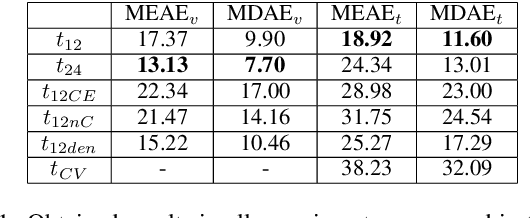
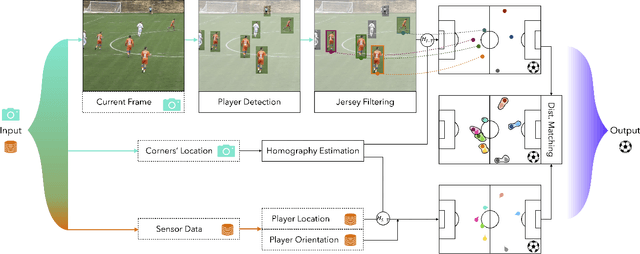
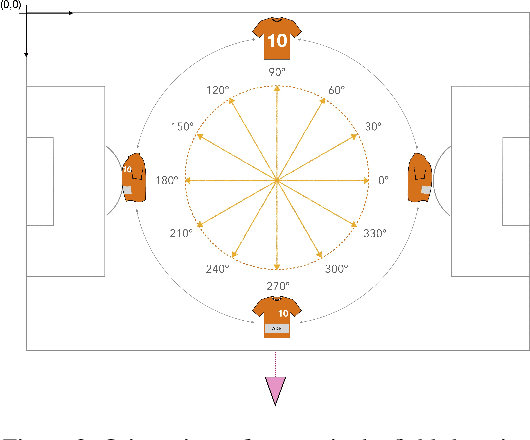
Abstract:Orientation is a crucial skill for football players that becomes a differential factor in a large set of events, especially the ones involving passes. However, existing orientation estimation methods, which are based on computer-vision techniques, still have a lot of room for improvement. To the best of our knowledge, this article presents the first deep learning model for estimating orientation directly from video footage. By approaching this challenge as a classification problem where classes correspond to orientation bins, and by introducing a cyclic loss function, a well-known convolutional network is refined to provide player orientation data. The model is trained by using ground-truth orientation data obtained from wearable EPTS devices, which are individually compensated with respect to the perceived orientation in the current frame. The obtained results outperform previous methods; in particular, the absolute median error is less than 12 degrees per player. An ablation study is included in order to show the potential generalization to any kind of football video footage.
Using Player's Body-Orientation to Model Pass Feasibility in Soccer
Apr 15, 2020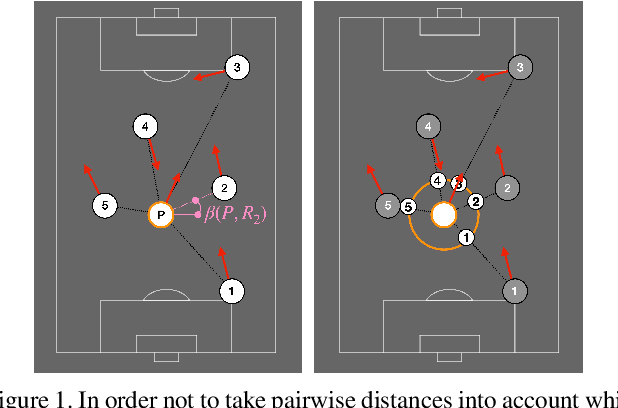

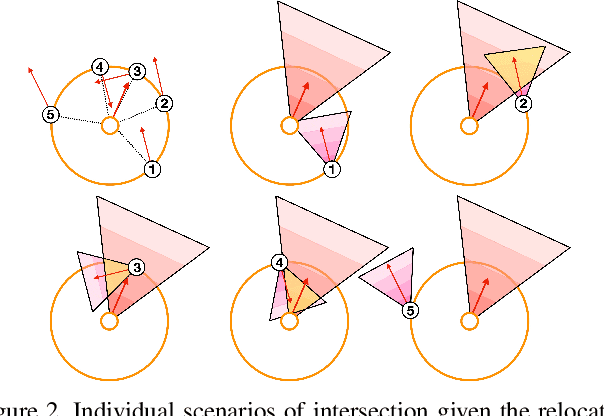
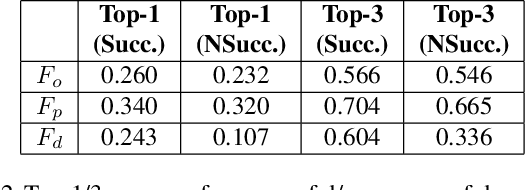
Abstract:Given a monocular video of a soccer match, this paper presents a computational model to estimate the most feasible pass at any given time. The method leverages offensive player's orientation (plus their location) and opponents' spatial configuration to compute the feasibility of pass events within players of the same team. Orientation data is gathered from body pose estimations that are properly projected onto the 2D game field; moreover, a geometrical solution is provided, through the definition of a feasibility measure, to determine which players are better oriented towards each other. Once analyzed more than 6000 pass events, results show that, by including orientation as a feasibility measure, a robust computational model can be built, reaching more than 0.7 Top-3 accuracy. Finally, the combination of the orientation feasibility measure with the recently introduced Expected Possession Value metric is studied; promising results are obtained, thus showing that existing models can be refined by using orientation as a key feature. These models could help both coaches and analysts to have a better understanding of the game and to improve the players' decision-making process.
Always Look on the Bright Side of the Field: Merging Pose and Contextual Data to Estimate Orientation of Soccer Players
Mar 02, 2020
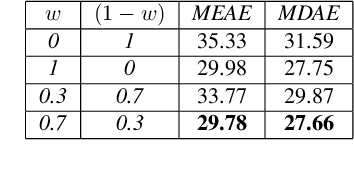

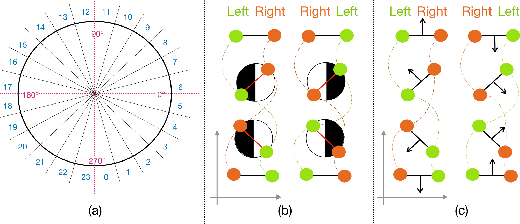
Abstract:Although orientation has proven to be a key skill of soccer players in order to succeed in a broad spectrum of plays, body orientation is a yet-little-explored area in sports analytics' research. Despite being an inherently ambiguous concept, player orientation can be defined as the projection (2D) of the normal vector placed in the center of the upper-torso of players (3D). This research presents a novel technique to obtain player orientation from monocular video recordings by mapping pose parts (shoulders and hips) in a 2D field by combining OpenPose with a super-resolution network, and merging the obtained estimation with contextual information (ball position). Results have been validated with players-held EPTS devices, obtaining a median error of 27 degrees/player. Moreover, three novel types of orientation maps are proposed in order to make raw orientation data easy to visualize and understand, thus allowing further analysis at team- or player-level.
Multi-Person tracking by multi-scale detection in Basketball scenarios
Jul 10, 2019



Abstract:Tracking data is a powerful tool for basketball teams in order to extract advanced semantic information and statistics that might lead to a performance boost. However, multi-person tracking is a challenging task to solve in single-camera video sequences, given the frequent occlusions and cluttering that occur in a restricted scenario. In this paper, a novel multi-scale detection method is presented, which is later used to extract geometric and content features, resulting in a multi-person video tracking system. Having built a dataset from scratch together with its ground truth (more than 10k bounding boxes), standard metrics are evaluated, obtaining notable results both in terms of detection (F1-score) and tracking (MOTA). The presented system could be used as a source of data gathering in order to extract useful statistics and semantic analyses a posteriori.
Single-Camera Basketball Tracker through Pose and Semantic Feature Fusion
Jul 10, 2019



Abstract:Tracking sports players is a widely challenging scenario, specially in single-feed videos recorded in tight courts, where cluttering and occlusions cannot be avoided. This paper presents an analysis of several geometric and semantic visual features to detect and track basketball players. An ablation study is carried out and then used to remark that a robust tracker can be built with Deep Learning features, without the need of extracting contextual ones, such as proximity or color similarity, nor applying camera stabilization techniques. The presented tracker consists of: (1) a detection step, which uses a pretrained deep learning model to estimate the players pose, followed by (2) a tracking step, which leverages pose and semantic information from the output of a convolutional layer in a VGG network. Its performance is analyzed in terms of MOTA over a basketball dataset with more than 10k instances.
 Add to Chrome
Add to Chrome Add to Firefox
Add to Firefox Add to Edge
Add to Edge